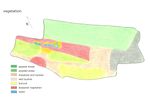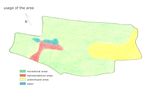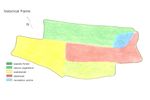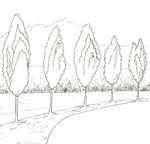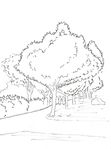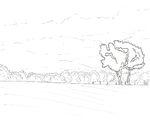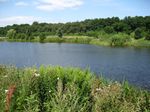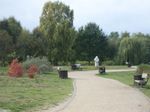Planting Design 2013 Working Group 30 - Case Study D
President Ronald Reagan's Park
---> back to group page working group 30
President Ronald Reagan's Park
| Name | President Ronald Reagan's Park | |
| Location | Gdańsk | |
| Country | Poland | |
| Authors | Barbara B | |
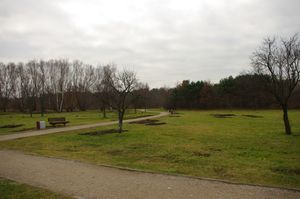
| ||
|
| ||
Rationale: Why is this case interesting?
The President Ronald Reagan's Park is a large public space located near the costline of Baltic Sea on the northern side of Gdańsk. It is separated from the beach only by a narrow line of protected dune. It's the biggest park in the City and one of the newest. It was established between year 2003 and 2006. Now the Park encompases 55,5 ha, but it's eastern part is not yet developed in accordence with it's purpose. The whole area is protected not only because it's considered a wetland but also because it's a part of underground drinking water spring for a considerable part of Gdańsk. The Park became a weekend escape, place to meet and go in for sports for city residents of all ages. I selected this site because it is a good example of understanding and cooperation between local government and community also taking into account the needs of nature.
Author's perspective
As a student of landscape architecture I consider this site to be a good example of melding solusions to many potencial problems, dependences and needs of both nature and society. I live close to this park and for me it was an interesting experience to watch it leisurely change. I like to visit it often.
Landscape and/or urban context of your case
- Biogeography, cultural features, overall character, history and dynamics
- Illustration: Map; sketches; short descriptive analyses
A few years ago on the area now occupied by the park there was a seaside forest, wasteland and allotments. As I mentioned formerly the area has to be protected so establishing a public park was one of the best options and wildlife benefited from this also. For that reason the entire area was excluded from motorised vehicle traffic. First the designers and engineers had to do away with area flooding problem. It was accomplish by building two retention reservoirs in the form of ponds (1,97 ha and 0,60 ha) and a net of drainage channels - building new ones and renovation the old ones. Most of plants grew naturaly, many were left after the shutdown of allotments. So in addition to the natural vegetation we have a lot of fruit trees that the designers and environmentalists allowed to stay, though they were renovated. Also added were decorative shrubs and alley trees but mostly in representative part. By the water sedges and canes were planted and now grow over 0,5 ha of the park area. So nowadays in the park there is a forest, vast meadows, cane fields, shrubs, two ponds with water cannels and recreational areas with pathways, benches, palisades also many playgrounds, bikepaths and a skatepark. It's a place for people looking for quiet leisure as well as those who wish to spend their time actively. Moreover there is a display of granitic sculptures picturing famous residents of Gdańsk. Also - 'educational path' boards with info about wildlife and ecology. The newest addition is "The Ecological lamp" powered by solar and wind energy. It's purpose is to show capabilities that nature gives to humans.
Analytical drawings
Please add four analytical sketches/drawings (or montages/schemes) of your case and take the following aspects into account:
- natural dynamic versus cultural framework - in how far do these two forces come together in your case?
- dynamic through the year (you may imagine how the site looks in spring and summer, maybe you also remember it)
- highlight potentials and problems
- Analytical Drawings
Projective drawings
- Please add four projective sketches/drawings (or montages/schemes) for your case and take the following aspects into account:
- How would you like this case to change in the near future? (in 1-2 years)
- And how could it look like in 10-15 years?
- Projective Drawings
Summary and conclusion
Summarising:
- area protected due to underground water source;
- solving the area flooding problem by building retention reservoirs (ponds);
- protection of the area also benefits plant and animal species;
- many animal species new to the area invited, especialy birds, frogs and insects;
- natural vegetation with addition of designed planting;
- space for ecological succession, native species of plants;
- new space for relaxation with educational purposes;
- new issue emerging: invasive species - Solidago canadensis faning out on the undeveloped area, threatning to spread on the entire park.
Managing of the area in this very free and natural way, adapting it for recreational purposes taking to acount the needs of both natural environment and society, makes the park a wonderful place. It is visited regularly by residents of Gdańsk and surrounding localities. On the area that has not yet been developed I would see the effortless and natural design continued.
Image Gallery
You may add a series of images/photos in addition to the sketches/drawings
- Image Gallery
References
* Please make sure that you give proper references of all external resources used.
* Do not use images of which you do not hold the copyright.
* Please add internet links to other resources if necessary.
About categories: You can add more categories with this tag: "", add your categories
